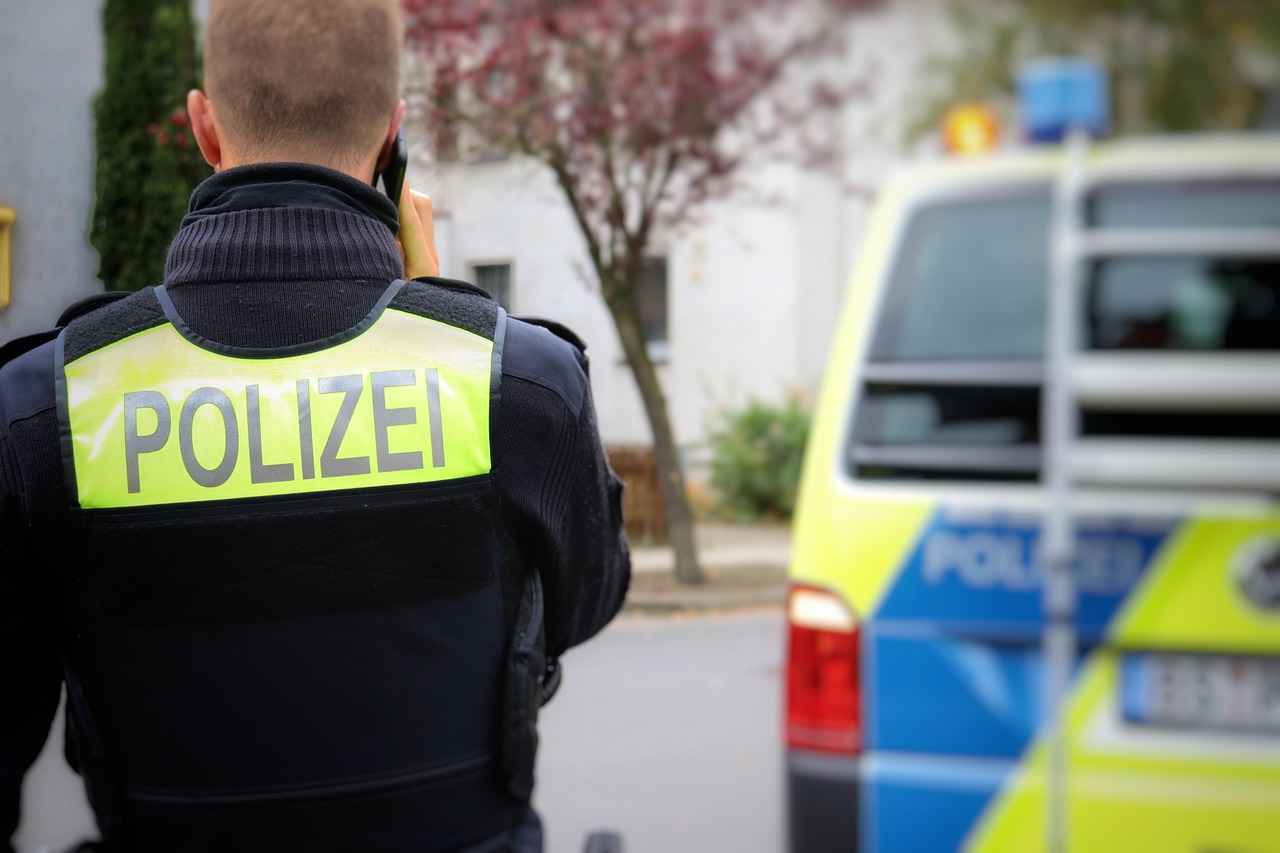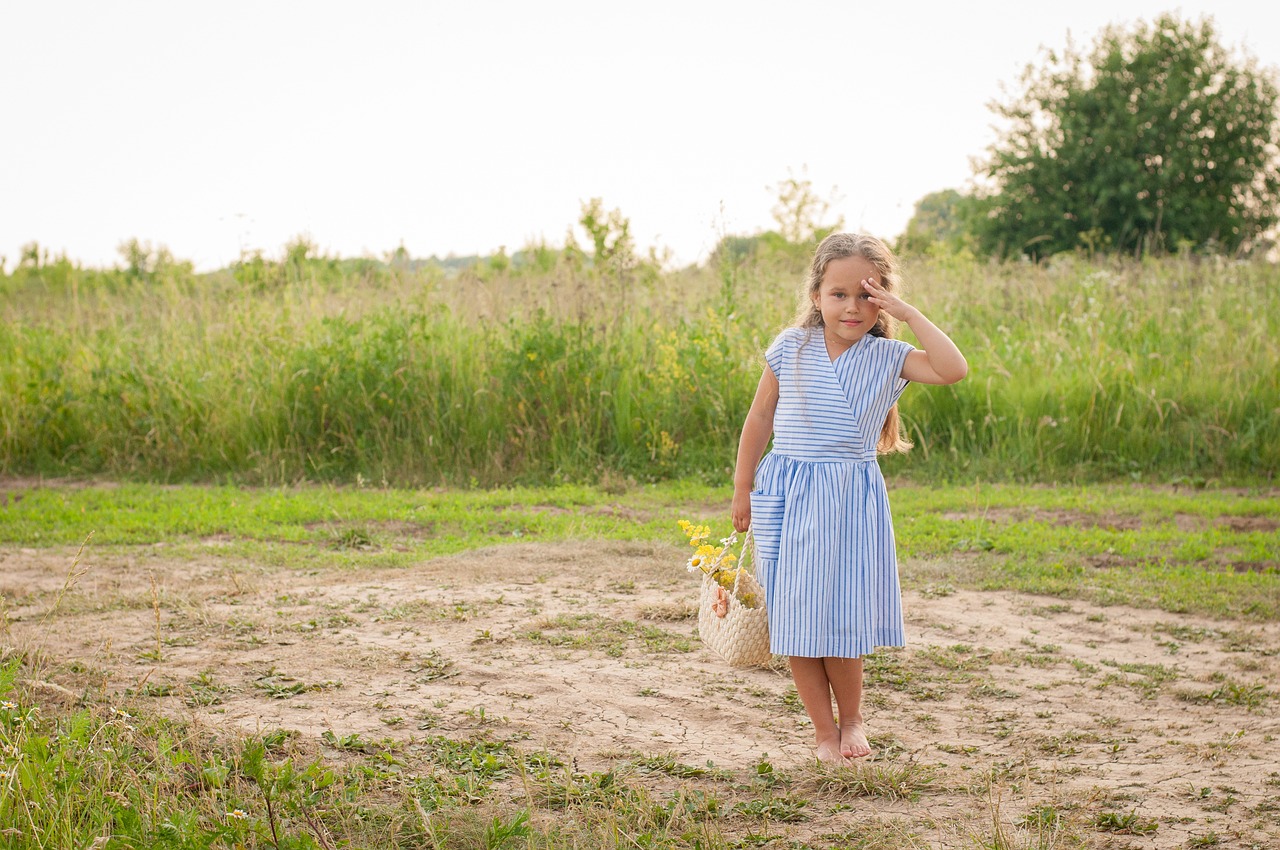Paw Patrol is more than just a children’s show; it has become a cultural phenomenon that captivates young audiences around the globe. This ultimate guide dives deep into the world of Paw Patrol, covering its characters, educational themes, merchandise, and ways to engage children effectively. Designed for both parents and kids, this guide will provide valuable insights into what makes this franchise so beloved.
What is Paw Patrol?
Paw Patrol is an animated series that follows a young boy named Ryder and his team of rescue dogs. Each dog has a unique skill set, and together they tackle various challenges in their community, promoting values such as teamwork, friendship, and problem-solving.
Meet the Paw Patrol Characters
- Ryder: The 10-year-old leader of the Paw Patrol, Ryder exemplifies leadership and responsibility, making him an excellent role model for children.
- Chase: The police pup, Chase, teaches kids about safety and the importance of following rules while embodying bravery.
- Marshall: The clumsy yet enthusiastic firefighter pup, Marshall, provides comic relief while demonstrating courage and resilience.
- Skye: The adventurous aviator pup, Skye, inspires children to explore their dreams and believe in themselves.
Educational Themes in Paw Patrol
Paw Patrol is rich in educational content. Each episode is crafted to impart essential life lessons that resonate with children and parents alike.
- Teamwork and Collaboration: The series emphasizes the importance of working together to solve problems, teaching kids that collaboration is key to success.
- Problem-Solving Skills: Each adventure presents unique challenges that require critical thinking and creativity, encouraging children to approach real-life problems proactively.
Paw Patrol Merchandise: What’s Available?
The Paw Patrol franchise offers an extensive range of merchandise that enhances children’s engagement with the series.
- Toys and Action Figures: These toys encourage imaginative play, allowing children to recreate their favorite scenes.
- Books and Educational Materials: A variety of books help reinforce the show’s lessons while promoting literacy in a fun way.
How to Incorporate Paw Patrol into Learning
Parents can use Paw Patrol to create educational opportunities in everyday activities.
- Creative Arts and Crafts: Encourage children to engage in Paw Patrol-themed arts and crafts to enhance creativity and reinforce their favorite characters.
- Storytelling and Role Play: Role-playing with Paw Patrol characters can boost language skills and foster imagination.
Why Kids Love Paw Patrol
Understanding why children are drawn to Paw Patrol can help parents connect with their interests.
- Relatable Characters: The diverse personalities allow kids to see themselves in the characters, fostering a sense of belonging.
- Engaging Storylines: The blend of action, humor, and moral lessons keeps children entertained while encouraging critical thinking.
Parental Guidance for Paw Patrol Viewing
While Paw Patrol is suitable for young audiences, parental guidance can enhance the viewing experience.
- Discussion After Episodes: Engaging in discussions about the characters’ decisions can reinforce the lessons learned.
- Setting Viewing Limits: It’s essential to balance screen time with other activities to promote a well-rounded lifestyle.
In summary, Paw Patrol is not just an entertaining show; it serves as a valuable educational tool that parents can utilize to engage their children in meaningful ways. From its diverse characters to its life lessons, Paw Patrol continues to inspire and educate young viewers.

What is Paw Patrol?
Paw Patrol is a beloved animated children’s series that has captured the hearts of young viewers around the world. Created by Keith Chapman, the show first premiered in 2013 and has since become a significant part of children’s entertainment. The series follows a group of heroic rescue dogs, each equipped with unique skills and gadgets, as they work together to protect their community under the guidance of a resourceful boy named Ryder.
The essence of Paw Patrol lies in its engaging storytelling, vibrant animation, and relatable characters. Each episode presents a new adventure where the pups face challenges that require teamwork, critical thinking, and courage. This not only entertains children but also imparts valuable life lessons that resonate with young audiences.
Key Themes and Values
- Teamwork: The show emphasizes the importance of working together to achieve common goals. Each pup has a specific role, showcasing how collaboration leads to success.
- Problem-Solving: Every adventure presents a unique problem that the pups must solve, encouraging children to think critically and creatively.
- Community Service: The series instills a sense of responsibility and the importance of helping others, encouraging children to be active members of their communities.
Meet the Paw Patrol Team
The main characters in Paw Patrol include:
| Character | Role | Key Traits |
|---|---|---|
| Ryder | Leader | Resourceful, responsible, and brave |
| Chase | Police Pup | Brave, authoritative, and loyal |
| Marshall | Firefighter Pup | Clumsy, enthusiastic, and caring |
| Skye | Aviator Pup | Adventurous, optimistic, and skilled |
Each character contributes to the group’s dynamic, providing children with role models who embody positive traits. For instance, Ryder’s leadership encourages responsibility, while Chase teaches the value of safety and rules.
Educational Benefits of Paw Patrol
Paw Patrol is not just entertaining; it serves as an educational tool. The show subtly incorporates lessons about friendship, empathy, and resilience. By following the pups on their adventures, children learn to navigate social situations and understand the importance of helping others.
Engaging Children Through Play
The popularity of Paw Patrol has led to an extensive range of merchandise, including toys, books, and apparel. These products allow children to engage with their favorite characters beyond the screen. For example, action figures can inspire imaginative play, while storybooks reinforce literacy skills and the values portrayed in the show.
Incorporating Paw Patrol into daily activities can enhance learning experiences. Parents can encourage arts and crafts projects based on the show, fostering creativity and reinforcing character recognition. Additionally, storytelling sessions where children create their own adventures can enhance language skills and boost confidence.
Overall, Paw Patrol is more than just a children’s show; it is a rich resource for learning and development. By understanding its characters and themes, parents can engage their children in meaningful discussions and activities that promote growth and understanding.

Meet the Paw Patrol Characters
Paw Patrol has captured the hearts of children worldwide with its engaging stories and lovable characters. Each pup brings their own unique skills and personalities to the team, making the show not only entertaining but also educational. Understanding these characters can significantly enhance your child’s viewing experience and deepen their connection to the show.
The diverse cast of characters allows children to relate to different traits and qualities, fostering a sense of identification and emotional engagement. Here, we delve deeper into some of the main characters, exploring their roles and the valuable lessons they impart.
- Ryder: The young leader of the Paw Patrol, Ryder is a 10-year-old boy who demonstrates leadership and problem-solving abilities. His character teaches children about responsibility, teamwork, and the importance of helping others. By following Ryder’s adventures, kids learn that anyone, regardless of age, can make a difference in their community.
- Chase: As the police pup, Chase is a German Shepherd who embodies bravery and authority. He teaches children about safety, the importance of following rules, and how to handle emergencies. His character encourages kids to be responsible and to think critically in situations that require quick decision-making.
- Marshall: The lovable Dalmatian serves as the team’s medic and firefighter. Marshall’s clumsiness often leads to humorous situations, but he also exemplifies the importance of courage and resilience. Through his character, children learn that it’s okay to make mistakes and that perseverance is key to overcoming challenges.
- Skye: The adventurous Cockapoo and the team’s aviator, Skye inspires kids to explore their dreams and embrace their adventurous spirit. Her character emphasizes the value of self-belief and encourages children to pursue their passions fearlessly.
- Rocky: The recycling pup, Rocky, teaches children about the importance of environmental awareness and sustainability. His resourcefulness and creativity in solving problems highlight how we can all contribute to a healthier planet.
- Zuma: The water-loving Labrador retriever, Zuma, introduces kids to the joys of water safety and teamwork. His character encourages children to have fun while being mindful of safety, especially during water activities.
By understanding these characters, parents can engage their children in discussions about the values and lessons portrayed in each episode. For instance, after watching an episode featuring Chase, parents might ask their children about the importance of safety rules or how they can be brave in their own lives.
Furthermore, the emotional connections that children develop with these characters can also serve as a springboard for conversations about friendship, teamwork, and problem-solving. By discussing the characters’ decisions and actions, parents can help their children reflect on their own experiences and feelings, thus reinforcing the lessons learned from the show.
In addition to enhancing viewing experiences, the characters of Paw Patrol can be integrated into various educational activities. Parents can encourage creative play by having their children act out scenarios involving their favorite pups, which can aid in developing social skills and emotional intelligence.
In summary, the rich tapestry of characters in Paw Patrol not only entertains but also educates. By fostering a deeper understanding of these characters, parents can enhance their child’s engagement with the series and instill valuable life lessons that extend beyond the screen.
Ryder: The Team Leader
Paw Patrol, a beloved animated series, captivates young audiences with its engaging characters and exciting adventures. At the heart of this dynamic team is Ryder, a remarkable 10-year-old boy who epitomizes leadership and problem-solving abilities. His character serves as a beacon of inspiration for children, instilling values that resonate beyond the screen.
Ryder’s Leadership Qualities
Ryder’s role as the team leader showcases his exceptional leadership qualities. He is not just a figurehead; he actively participates in every mission, demonstrating a hands-on approach that children can admire. His ability to remain calm under pressure and make quick decisions is a vital lesson for young viewers, teaching them the importance of composure and confidence in challenging situations.
Problem-Solving Skills
Each episode presents a unique challenge that Ryder and his team must overcome. His problem-solving skills are highlighted as he assesses situations, formulates plans, and delegates tasks to his canine companions based on their individual strengths. This approach not only emphasizes the importance of strategic thinking but also encourages children to think critically and creatively when faced with obstacles in their own lives.
Promoting Responsibility
Ryder embodies responsibility, a trait that is essential for young viewers to learn. He takes charge of the Paw Patrol missions and ensures that each pup is prepared and equipped for their tasks. This portrayal of responsibility teaches children about the significance of being accountable for their actions and the impact they can have on their community.
Encouraging Teamwork
One of the standout themes in Ryder’s leadership is his emphasis on teamwork. He fosters a collaborative environment where every pup’s contribution is valued. This dynamic encourages children to appreciate the power of working together towards a common goal, highlighting that success often requires collective effort. The show illustrates that each character brings unique skills to the table, reinforcing the idea that diversity in teamwork leads to better outcomes.
Building Empathy and Compassion
Ryder’s interactions with his team and the community often showcase empathy and compassion. He teaches the pups to understand and respect the feelings of others, which is a vital lesson for young viewers. By modeling these behaviors, Ryder encourages children to develop their emotional intelligence and understand the importance of kindness and support in their relationships.
Inspiring Young Viewers
Through Ryder’s character, children learn valuable life lessons that extend beyond entertainment. His leadership style, problem-solving abilities, and commitment to teamwork serve as a guide for young viewers, encouraging them to emulate these qualities in their own lives. As a role model, Ryder helps shape the values of responsibility, cooperation, and empathy, preparing children to navigate the complexities of their world.
In summary, Ryder is not just a character in Paw Patrol; he is a powerful symbol of leadership and personal growth. His influence reaches far and wide, teaching children essential skills that will benefit them throughout their lives. By following his example, young viewers can learn to become responsible, compassionate, and effective leaders in their own right.
Chase: The Police Pup
Chase is not just a character in the beloved series Paw Patrol; he represents the ideals of bravery, responsibility, and community service. As a German Shepherd serving as the police pup of the team, Chase plays a pivotal role in teaching children about safety and the importance of following rules. His character is designed to resonate with young viewers, instilling values that are crucial for their development.
Chase’s role as the police pup is multifaceted. He is often seen leading the team during missions, showcasing his leadership skills and decision-making abilities. This not only entertains children but also serves as a great example of how to take charge in situations that require quick thinking and action. Through his adventures, kids learn that being a leader involves responsibility and the ability to work well with others.
One of the standout features of Chase’s character is his unwavering bravery. He faces challenges head-on, whether it’s rescuing a kitten stuck in a tree or helping a friend in distress. This portrayal encourages children to be courageous in their own lives, teaching them that it’s okay to feel scared but important to overcome those fears. Chase’s bravery is often complemented by his authority as a police pup, which emphasizes the importance of rules and safety in everyday life.
Chase also serves as a model for problem-solving. Each episode presents a unique challenge that requires creative thinking and teamwork. For instance, when the Paw Patrol faces a situation that requires Chase’s expertise, he demonstrates how to assess the problem and come up with a plan. This aspect of his character encourages children to think critically about the challenges they encounter, fostering a proactive mindset that can be beneficial in real-life situations.
Moreover, Chase’s interactions with his fellow Paw Patrol members highlight the importance of teamwork and collaboration. He often works alongside other pups, such as Marshall and Skye, showing children that success is often a group effort. This reinforces the idea that working together can lead to better outcomes, a lesson that extends beyond the screen and into their daily interactions.
In addition to his heroic traits, Chase is also portrayed with a sense of humor and playfulness. His character often lightens the mood during intense moments, reminding children that it’s important to find joy even in challenging situations. This balance of seriousness and fun makes him a relatable character for children, allowing them to connect with him on multiple levels.
Chase’s character is further enhanced by his iconic police vehicle, which is equipped with various tools that assist in rescue missions. The vehicle not only adds excitement but also serves as a teaching tool, illustrating how technology can be used for good. Children are captivated by the cool gadgets and the fast-paced action, making learning about safety and rules engaging and fun.
Overall, Chase serves as a powerful role model for young viewers. His embodiment of bravery, authority, and teamwork provides a solid foundation for teaching children about safety and the importance of following rules. Through his adventures, children are inspired to emulate his positive traits, making Chase an integral part of the Paw Patrol experience that resonates with families everywhere.
Marshall: The Firefighter Pup
Marshall is not just any pup; he is a Dalmatian who plays a critical role as the team’s medic and firefighter in the beloved animated series, Paw Patrol. His character brings a delightful mix of enthusiasm and clumsiness, which adds a layer of humor to the show while also imparting important lessons about courage and resilience.
One of the most endearing aspects of Marshall’s character is his unwavering enthusiasm. Whether he is rushing to the scene of a fire or helping a fellow pup, his eagerness to assist others is infectious. This enthusiasm resonates with young viewers, teaching them the value of being proactive and willing to lend a helping paw. Marshall’s readiness to jump into action, even when things don’t go as planned, showcases the importance of perseverance in the face of challenges.
However, what makes Marshall truly unique is his clumsy nature. Often, his well-meaning attempts to save the day lead to humorous mishaps. For example, he might trip over his own paws while trying to carry a fire hose or accidentally spray water on his friends instead of the fire. These moments not only provide comic relief but also serve as a reminder that making mistakes is a natural part of learning and growing. Kids watching Marshall can learn that it’s okay to stumble along the way; what matters is getting back up and trying again.
Marshall’s role as the medic introduces young audiences to the concept of first aid and caring for others. His medical kit is always at the ready, and he often helps his friends when they are in need. This aspect of his character encourages children to be compassionate and to understand the importance of health and safety. Through Marshall, kids learn that being a hero isn’t just about bravery; it’s also about being kind and caring for those around them.
In addition to his comedic and caring traits, Marshall embodies the spirit of teamwork. Throughout various episodes, he collaborates with his fellow Paw Patrol members to tackle emergencies. This teamwork emphasizes the idea that no challenge is too great when friends come together. Whether it’s extinguishing a fire or rescuing a kitten stuck in a tree, Marshall’s interactions with the other pups illustrate the significance of collaboration in achieving common goals.
Moreover, Marshall’s character development throughout the series highlights the importance of self-acceptance. Despite his clumsiness, he learns to embrace his unique qualities and recognizes that everyone has their strengths and weaknesses. This message is crucial for children, as it encourages them to appreciate their individuality and understand that everyone has something valuable to contribute.
In summary, Marshall the Firefighter Pup serves as a multifaceted character that embodies courage, compassion, and the importance of teamwork. His clumsy yet enthusiastic nature adds a layer of humor to the show while teaching children essential life lessons. By following Marshall’s adventures, young viewers are not only entertained but also inspired to be brave, resilient, and kind-hearted in their own lives.
Skye: The Aviator Pup
Skye is not just any pup; she is a Cockapoo and the team’s talented aviator in the beloved series Paw Patrol. Her character is designed to inspire children to embrace their adventurous spirit and explore their dreams. Skye’s vibrant personality and fearless attitude serve as a beacon of encouragement, teaching kids the invaluable lesson of believing in themselves.
As the only female pup in the main team, Skye represents empowerment and resilience. Her role as the aviator allows her to soar above challenges, both literally and metaphorically. Children watching her adventures learn that it’s okay to take risks and venture into the unknown. Skye’s ability to fly not only adds excitement to the show but also symbolizes freedom and the pursuit of aspirations. Through her character, kids are reminded that they can achieve anything if they set their minds to it.
In each episode, Skye showcases her unique skills, using her helicopter to assist her friends in various missions. Whether it’s rescuing a kitten from a tree or helping to clear a path for the Paw Patrol team, her quick thinking and resourcefulness highlight the importance of problem-solving and teamwork. Children learn that collaboration is key when facing obstacles, and Skye often leads the charge with her can-do attitude.
Moreover, Skye’s character encourages young viewers to embrace their individuality. She is not afraid to express herself, whether through her love for flying or her stylish aviator goggles. This emphasis on self-expression resonates with children, teaching them that their unique traits are what make them special. Skye’s confidence inspires kids to be proud of who they are and to pursue their passions, no matter how big or small.
In addition to her adventurous spirit, Skye also embodies empathy and compassion. She often takes time to listen to her friends and offer support, reinforcing the importance of friendship and kindness. This aspect of her character teaches children that true strength lies not only in bravery but also in being there for others. Skye’s caring nature helps to foster a sense of community and support among the Paw Patrol team, making her a role model for young viewers.
As parents, encouraging children to watch Skye’s adventures can lead to meaningful conversations about self-belief and the importance of pursuing dreams. After watching episodes featuring Skye, parents can engage children in discussions about their own aspirations and how they can overcome challenges in their lives. This not only reinforces the lessons from the show but also helps children articulate their thoughts and feelings.
In conclusion, Skye, the aviator pup, is a multifaceted character who embodies adventure, empowerment, and compassion. Her presence in Paw Patrol serves as a reminder to children that they are capable of achieving their dreams and should always believe in themselves. Through her inspiring actions and positive messages, Skye continues to capture the hearts of young viewers, encouraging them to soar to new heights.

Educational Themes in Paw Patrol
Paw Patrol is a beloved animated series that not only entertains but also imparts essential life lessons to its young audience. The show is designed to resonate with both children and parents, making it a valuable resource for family viewing. The educational themes woven throughout the episodes serve to develop important social skills and cognitive abilities in children, ensuring that they can learn while having fun.
One of the most prominent themes in Paw Patrol is teamwork. Each episode showcases how the diverse group of pups collaborates to solve problems and complete missions. This emphasis on collaboration teaches children that working together can lead to better outcomes than working alone. The pups each bring unique skills to the table, demonstrating that everyone has something valuable to contribute. Parents can use these examples to discuss the importance of teamwork in their own lives, whether in school projects or family activities.
Another critical educational theme is problem-solving. The adventures faced by the Paw Patrol often involve unique challenges that require creative solutions. As children watch Ryder and his team tackle these issues, they are encouraged to think critically about how they would approach similar situations. This not only enhances their cognitive skills but also fosters a proactive mindset, preparing them to tackle challenges in their own lives. Parents can reinforce this theme by asking their children how they would solve problems presented in the episodes.
In addition to teamwork and problem-solving, Paw Patrol emphasizes the value of friendship and social skills. The relationships among the characters highlight the importance of cooperation, empathy, and support. Children learn that friendships require effort and understanding, and they see how the pups resolve conflicts and support each other through challenges. Parents can engage their children in discussions about friendship, helping them understand how to build and maintain healthy relationships.
Paw Patrol also instills a sense of responsibility towards the community. Each mission often involves helping others, whether it’s rescuing a kitten stuck in a tree or cleaning up the park. This theme encourages children to think about their own roles within their communities and inspires them to contribute positively. Parents can capitalize on this by involving their children in community service activities, reinforcing the idea that helping others is a valuable and rewarding experience.
The imaginative scenarios presented in Paw Patrol also serve to enhance children’s creativity. The vibrant characters and adventurous plots inspire kids to think outside the box and engage in creative play. Encouraging children to create their own Paw Patrol stories or adventures can further develop their imaginative skills. Parents can facilitate this by providing art supplies or storytelling prompts, allowing their children to express their creativity in various forms.
Through its entertaining narratives and engaging characters, Paw Patrol successfully imparts valuable life lessons that resonate with young viewers. By focusing on teamwork, problem-solving, friendship, community service, and creativity, the show not only entertains but also prepares children for real-world challenges. Parents who recognize and discuss these themes with their children can enhance the educational value of the series, making it a powerful tool for growth and development.
Teamwork and Collaboration
Paw Patrol is not just an entertaining show for children; it is a rich source of valuable life lessons, especially in the realm of . Each episode serves as a vibrant illustration of how working together can lead to successful outcomes, reinforcing the idea that no challenge is too great when a team pulls together.
The narrative structure of Paw Patrol emphasizes the importance of collaboration. The main characters, a group of rescue pups, each possess unique skills that contribute to the team’s overall success. For instance, when faced with a problem, the pups quickly gather to assess the situation, demonstrating the first step in effective teamwork: communication. They discuss their thoughts, share ideas, and listen to each other’s perspectives, which is crucial for any team.
Throughout the series, viewers witness how the pups tackle various challenges, from rescuing a kitten stuck in a tree to saving a train from derailing. Each scenario requires the pups to utilize their distinct abilities while relying on one another. This not only showcases the value of diversity in teamwork but also teaches children that every member has an important role to play, no matter how big or small. The show effectively communicates that collaboration can lead to innovative solutions, encouraging kids to think critically about how they can work with others in their own lives.
Moreover, the show introduces various scenarios where the pups must overcome obstacles that require them to trust one another. For example, in one episode, Skye’s flying skills are essential for spotting a problem from above, while Marshall’s firefighting expertise is crucial for handling emergencies on the ground. This interdependence among characters reinforces the idea that trust is a fundamental component of effective teamwork.
The educational aspect of teamwork in Paw Patrol extends beyond the screen. Parents can engage their children in discussions about the episodes, prompting questions like, “How did the pups work together to solve the problem?” or “What would happen if they didn’t collaborate?” Such conversations can deepen children’s understanding of teamwork and help them apply these lessons in real-life situations, whether in school projects, sports teams, or friendships.
Furthermore, the show subtly incorporates elements of conflict resolution. Occasionally, disagreements arise among the pups, providing teachable moments for young viewers. They see how the characters navigate these conflicts through dialogue and compromise, illustrating that even the best teams face challenges but can overcome them through patience and understanding.
To enhance the learning experience, parents can introduce activities that promote teamwork at home. Simple games that require cooperation, such as building a puzzle together or playing team sports, can reinforce the lessons learned from Paw Patrol. These activities not only strengthen family bonds but also provide practical applications of teamwork in a fun and engaging way.
In conclusion, Paw Patrol serves as an excellent platform for teaching children about the significance of teamwork and collaboration. The engaging stories, relatable characters, and valuable lessons resonate with young viewers, making it more than just a show. By promoting discussions and activities centered around these themes, parents can help their children internalize the importance of working together to achieve common goals, fostering skills that will benefit them throughout their lives.
Problem-Solving Skills
Paw Patrol is not just an entertaining show for children; it serves as a valuable educational tool that promotes essential life skills. One of the key themes throughout the series is . Each episode presents the Paw Patrol team with a unique challenge that requires them to think critically and creatively. This aspect of the show is particularly beneficial for young viewers as it encourages them to approach problems with a proactive mindset.
As children watch Ryder and his team of rescue pups tackle various dilemmas, they are exposed to different methods of problem-solving. For instance, the pups often have to assess situations, brainstorm potential solutions, and work collaboratively to implement their plans. This process not only entertains but also teaches children how to break down complex issues into manageable steps. Such skills are invaluable in real-life scenarios, whether in school, at home, or in social interactions.
In addition to critical thinking, the show fosters creativity. For example, when faced with a challenge, the pups often devise unique strategies that reflect their individual skills and personalities. This not only showcases the importance of leveraging one’s strengths but also inspires children to think outside the box. By encouraging imaginative solutions, Paw Patrol helps children understand that there can be multiple ways to tackle a problem.
Furthermore, the series promotes teamwork and collaboration as essential components of problem-solving. Each adventure highlights how the pups rely on each other’s strengths, demonstrating that working together can lead to more effective solutions. This is a crucial lesson for children, as it teaches them the value of cooperation and communication in overcoming obstacles. By seeing their favorite characters collaborate, children learn that they, too, can seek help and support from others when faced with challenges.
To further enhance the educational value of Paw Patrol, parents can engage their children in discussions about the episodes. After watching, parents can ask questions such as, “What would you have done in that situation?” or “How did the pups work together to solve the problem?” This encourages children to reflect on the lessons learned and apply them to their own lives.
Additionally, parents can create real-life scenarios that mimic the problem-solving situations presented in the show. For instance, they can set up simple challenges at home, such as building a fort with limited materials or organizing a scavenger hunt. These activities not only reinforce the skills learned from Paw Patrol but also provide opportunities for children to practice their problem-solving abilities in a fun and engaging way.
In summary, Paw Patrol serves as an excellent platform for teaching children essential problem-solving skills. By presenting relatable challenges and promoting teamwork, the show encourages critical thinking and creativity. Parents can further enhance this learning experience by discussing episodes and creating real-life problem-solving scenarios. Through these methods, children can develop a proactive approach to challenges, equipping them with the tools they need to navigate the complexities of life.

Paw Patrol Merchandise: What’s Available?
The Paw Patrol franchise has captured the hearts of children worldwide, offering a plethora of merchandise that extends beyond mere toys. This section delves into the various categories of Paw Patrol merchandise available, highlighting popular items that can significantly enhance your child’s engagement with the series.
- Toys and Action Figures
Paw Patrol toys are among the most sought-after items, featuring a variety of action figures of beloved characters like Chase, Marshall, and Skye. These toys allow children to recreate their favorite scenes from the show, fostering imaginative play and storytelling. Additionally, many toys come with interactive features, such as sound effects and lights, making playtime even more exciting.
- Clothing and Accessories
Children can wear their favorite characters with a range of Paw Patrol clothing options, including t-shirts, pajamas, and hats. These items not only allow kids to express their fandom but also serve as conversation starters with peers. Moreover, accessories such as backpacks and lunchboxes featuring Paw Patrol designs can make school days more enjoyable.
- Books and Educational Materials
The franchise also offers a variety of books that are perfect for young readers. From storybooks that recount the adventures of the pups to educational workbooks that promote literacy and problem-solving skills, these materials can reinforce the lessons learned in the show. Paw Patrol books often incorporate fun activities, making learning a playful experience.
- Arts and Crafts Supplies
For creatively inclined children, Paw Patrol arts and crafts supplies can provide hours of entertainment. Kits that include coloring books, stickers, and DIY craft projects allow children to explore their artistic side while engaging with their favorite characters. This not only enhances their creativity but also strengthens their connection to the series.
- Home Decor
Parents can transform their child’s room into a Paw Patrol wonderland with themed decor. Items such as bedspreads, wall decals, and curtains featuring the pups can create an immersive environment that encourages imaginative play. Such decor can also make bedtime more exciting, as children drift off to sleep surrounded by their favorite characters.
- Party Supplies
For birthdays or special occasions, Paw Patrol themed party supplies can make celebrations unforgettable. From plates and cups to decorations and party favors, these items can bring the excitement of the show into real life. Organizing a Paw Patrol party allows children to share their love for the series with friends, making it a memorable event.
In summary, the Paw Patrol franchise offers a diverse range of merchandise that caters to various interests and age groups. From toys and clothing to educational materials and home decor, these items not only enhance children’s engagement with the series but also provide opportunities for learning and creativity. By investing in Paw Patrol merchandise, parents can foster their child’s imagination and reinforce the valuable lessons presented in the show.
Toys and Action Figures
Paw Patrol toys and action figures have become a must-have for children who adore the series. These toys not only serve as playthings but also act as tools for imaginative play, allowing children to step into the paws of their favorite characters and recreate thrilling scenes and adventures from the show. The excitement generated by these toys is palpable, as they empower kids to engage in creative storytelling and role-playing.
The wide variety of Paw Patrol merchandise includes action figures, playsets, vehicles, and plush toys, each designed to capture the essence of the beloved characters. For instance, the action figures come in detailed designs, closely resembling the characters seen in the animated series. This attention to detail enhances the play experience, making it feel more authentic and engaging.
One of the key benefits of these toys is their ability to promote social skills. When children play together with Paw Patrol toys, they often take on different roles, negotiate storylines, and collaborate to solve problems, mirroring the teamwork showcased in the show. This kind of play encourages communication and fosters friendships, making it a valuable activity for young children.
| Toy Type | Benefits |
|---|---|
| Action Figures | Encourages imaginative play and storytelling. |
| Playsets | Enhances creativity and problem-solving skills. |
| Vehicles | Promotes fine motor skills and hand-eye coordination. |
| Plush Toys | Provides comfort and emotional support. |
In addition to fostering creativity and social interaction, Paw Patrol toys also offer educational benefits. Many of the playsets are designed to challenge children’s critical thinking and problem-solving abilities. For example, some sets include obstacles that require kids to devise strategies to overcome them, mirroring the problem-solving themes presented in the show.
Furthermore, the act of playing with these toys can help enhance language skills. As children narrate their adventures or act out scenes, they practice vocabulary and sentence structure, which contributes to their overall language development. This aspect of play is particularly beneficial for preschoolers who are just beginning to develop their communication skills.
Parents often appreciate the educational value of Paw Patrol toys, as they align with the lessons taught in the series. The themes of teamwork, bravery, and community service are prevalent in both the show and the toys, allowing parents to reinforce these important values during playtime. This synergy between the show and its merchandise enhances the overall experience for children, making it not just fun but also enriching.
In summary, Paw Patrol toys and action figures are not merely toys; they are gateways to a world of creativity, learning, and social interaction. By encouraging imaginative play, fostering social skills, and promoting educational development, these toys have become a cherished part of childhood for many. Whether it’s through action figures, playsets, or plush toys, the Paw Patrol franchise continues to inspire children to dream big and work together, just like their favorite pups.
Books and Educational Materials
Paw Patrol: Books and Educational MaterialsPaw Patrol has become a household name, captivating the hearts of children and parents alike. Beyond its entertaining episodes, the franchise also offers a wide array of designed to enhance learning and literacy in a fun and engaging way.
- Variety of Books: The Paw Patrol series features picture books, chapter books, and activity books that cater to different age groups and reading levels. These books often include beloved characters and storylines from the show, making them relatable and exciting for young readers.
- Learning Through Stories: Each book typically incorporates valuable lessons that mirror the themes presented in the show, such as teamwork, friendship, and problem-solving. This reinforces the educational content while keeping children entertained.
- Interactive Elements: Many Paw Patrol books come with interactive elements, such as puzzles, games, and stickers. These features encourage children to engage with the content actively, enhancing their comprehension and retention of information.
Benefits of Reading Paw Patrol Books
The educational materials associated with Paw Patrol provide numerous benefits for young readers. Here are a few reasons why incorporating these books into your child’s routine can be advantageous:
- Promotes Literacy: Reading Paw Patrol books helps children develop essential literacy skills, including vocabulary, comprehension, and fluency. The familiar characters and engaging stories motivate children to read more.
- Encourages Critical Thinking: Many stories present challenges that the Paw Patrol pups must solve. This encourages children to think critically and develop problem-solving skills as they predict outcomes and discuss solutions.
- Strengthens Parent-Child Bond: Sharing stories together can create meaningful moments between parents and children. Reading aloud or discussing the books allows for quality bonding time while reinforcing the lessons learned.
How to Use Paw Patrol Books for Learning
Incorporating Paw Patrol books into your child’s learning routine can be both enjoyable and educational. Here are some practical tips for parents:
- Create a Reading Schedule: Establish a regular reading time, such as before bed or after school, to encourage a habit of reading. This routine can help children look forward to their reading sessions.
- Discuss the Stories: After reading a book, engage your child in a discussion about the characters and the lessons learned. Ask questions like, “What would you do if you were in that situation?” to promote critical thinking.
- Incorporate Crafts and Activities: Use the stories as inspiration for arts and crafts projects. For example, children can create their own Paw Patrol character or draw scenes from the book, enhancing their creativity while reinforcing the story.
Conclusion
The Paw Patrol franchise extends its impact beyond the screen through a diverse selection of books and educational materials. These resources not only entertain but also contribute to a child’s literacy development and critical thinking skills. By integrating these books into daily routines, parents can foster a love for reading while reinforcing the positive messages of teamwork and problem-solving that Paw Patrol embodies.

How to Incorporate Paw Patrol into Learning
Paw Patrol has become a beloved series among children, but it can also serve as a valuable educational resource for parents looking to engage their kids in learning. This section will explore various ways to incorporate lessons from the show into everyday learning activities, making education both fun and interactive.
One of the most effective ways to engage children with educational content is by integrating it into their interests. Here are some practical methods to use Paw Patrol themes in learning:
- Math Skills: Use the characters’ rescue missions to create math problems. For example, if Chase needs to gather 5 bones and Skye finds 3 more, ask your child how many bones they have in total. This not only reinforces addition but also makes math relatable.
- Reading Comprehension: Encourage your child to read Paw Patrol books. After reading, ask questions about the story to enhance comprehension. Discuss character motivations and plot points to deepen understanding.
- Science Exploration: Discuss the different jobs of each pup and how they relate to real-world professions. For instance, talk about fire safety with Marshall or the roles of police officers with Chase. This can lead to discussions about community helpers and their importance.
Encouraging children to create Paw Patrol-themed arts and crafts can enhance their creativity while reinforcing the characters and stories they love. Activities can include:
- Character Masks: Have your child create masks of their favorite characters using paper plates, colors, and other craft supplies. This activity not only encourages creativity but also allows for imaginative play.
- DIY Rescue Missions: Set up a mini obstacle course in your backyard or living room, where children can pretend to be their favorite Paw Patrol characters completing missions. This promotes physical activity while engaging their imagination.
Role-playing is a powerful tool for learning. Encourage your child to act out their favorite episodes or create new adventures with Paw Patrol characters. This enhances language skills and boosts confidence as they narrate stories and dialogue. Here are some ways to facilitate this:
- Script Writing: Help your child write a short script for a new episode featuring their favorite pups. This activity promotes writing skills and creativity.
- Group Playdates: Organize playdates where children can act out Paw Patrol scenarios with friends, fostering social skills and teamwork.
Each episode of Paw Patrol carries valuable lessons about friendship, teamwork, and problem-solving. After watching an episode, engage your child in discussions about the moral of the story. Ask questions like:
- What did the pups learn from their adventure?
- How did they work together to solve the problem?
- What would you have done differently?
This not only reinforces the lessons but also encourages critical thinking and empathy.
In today’s digital age, parents can utilize apps and educational games related to Paw Patrol. Many platforms offer interactive learning experiences that align with the show’s themes. Here are some recommendations:
- Paw Patrol: Adventure Bay app allows children to engage in problem-solving activities while interacting with their favorite characters.
- Online Puzzles and Games: Websites often feature Paw Patrol-themed puzzles and games that can enhance cognitive skills while keeping learning fun.
By creatively integrating Paw Patrol into daily learning activities, parents can foster a love of education in their children while reinforcing the valuable lessons presented in the show.
Creative Arts and Crafts
activities inspired by Paw Patrol can be an exciting way for children to express their creativity while deepening their connection to their favorite characters. Engaging in these activities not only fosters artistic skills but also enhances cognitive development and emotional expression. Here are some fun and educational ideas to get started.
- Drawing and Coloring: Encourage children to create their own Paw Patrol scenes by drawing or coloring their favorite characters. Providing them with coloring books or printable coloring pages featuring characters like Chase, Marshall, and Skye can help them practice fine motor skills while having fun.
- DIY Puppets: Making Paw Patrol puppets using paper bags or socks can be a delightful project. Children can decorate their puppets to resemble their favorite pups and then use them for storytelling or role-playing activities. This not only enhances creativity but also boosts their confidence in performing.
- Crafting Rescue Vehicles: Kids can use recycled materials like cardboard boxes, bottle caps, and paper towel rolls to create their own rescue vehicles. This DIY project encourages problem-solving as they figure out how to assemble their creations while learning about recycling and sustainability.
- Painting Adventures: Set up a painting station with canvases or large sheets of paper. Children can paint scenes from their favorite episodes or invent their own adventures featuring the Paw Patrol team. This activity promotes self-expression and allows them to explore colors and techniques.
By incorporating these arts and crafts activities into your child’s routine, you can create a rich learning environment that emphasizes creativity and imagination. Here are some additional benefits:
- Enhancing Fine Motor Skills: Activities like cutting, gluing, and painting help improve hand-eye coordination and dexterity, which are crucial for young children.
- Encouraging Teamwork: Group projects can foster collaboration. Children can work together to create a large mural or a group puppet show, learning to share ideas and support each other.
- Boosting Confidence: Completing a craft project gives children a sense of accomplishment. Displaying their artwork at home or sharing it with family members can further enhance their self-esteem.
In addition to the creative aspects, these activities can be linked back to the educational themes present in Paw Patrol. For instance, while crafting, parents can discuss the importance of teamwork and problem-solving, mirroring the lessons learned from the show. This connection between play and learning solidifies the messages conveyed through the series.
Ultimately, Paw Patrol-themed arts and crafts are not just about keeping children entertained; they are about fostering a love for creativity and learning. As children engage with their favorite characters through these activities, they develop skills that will benefit them far beyond the craft table.
Storytelling and Role Play
are essential components of childhood development, and incorporating Paw Patrol characters into these activities can significantly enhance language skills and confidence in young children. By engaging in role play, kids can act out their favorite episodes or even create new adventures, which fosters their imagination and creativity.
Through storytelling, children learn to express themselves more clearly, develop their vocabulary, and improve their comprehension skills. When they use Paw Patrol characters, they not only connect with familiar figures but also embrace the lessons these characters embody. For instance, when children role-play as Ryder or their favorite pup, they practice dialogue and narrative structure, which are crucial for effective communication.
Moreover, role play allows children to explore various scenarios and emotions. They can reenact episodes where the Paw Patrol team faces challenges, teaching them about problem-solving and teamwork. This type of play encourages kids to think critically and collaboratively, skills that are invaluable in both academic and social settings.
- Encouraging Creative Expression: By creating their own stories, children can explore different plots and outcomes. This not only enhances their creativity but also boosts their self-esteem as they see their ideas come to life.
- Building Vocabulary: As children engage in storytelling, they learn new words and phrases. Using characters from Paw Patrol provides context that makes learning more enjoyable and relatable.
- Improving Social Skills: Role-playing with peers or family members helps children develop their social skills. They learn to take turns, negotiate roles, and understand different perspectives.
In addition, parents can facilitate these activities by providing props or creating a dedicated play space. Simple items like costumes, toys, or even drawings of the characters can enhance the experience. For example, a child dressed as Skye can pretend to fly on adventures, while another as Chase can take on the role of a police officer solving a mystery. This immersive play not only entertains but also reinforces the lessons learned from the show.
Furthermore, storytelling can be expanded beyond just role play. Parents can encourage their children to write down their own Paw Patrol stories or create comic strips. This practice not only enhances writing skills but also allows kids to reflect on the themes of friendship, bravery, and teamwork that are prevalent in the series.
In conclusion, incorporating Paw Patrol characters into storytelling and role play is a dynamic way to enhance children’s language skills and boost their confidence. By acting out their favorite episodes or inventing new adventures, children engage their imagination and learn valuable life skills. With the support of parents, these activities can become a fundamental part of a child’s growth and development.

Why Kids Love Paw Patrol
Paw Patrol has captured the hearts of millions of children worldwide, and there are several compelling reasons for this phenomenon. The show not only entertains but also educates, making it a favorite among both kids and parents. Here, we delve into the key factors that contribute to the show’s popularity.
One of the primary reasons children resonate with Paw Patrol is its diverse cast of characters. Each pup in the series has unique traits and abilities that mirror the various personalities found in real life. For instance:
- Ryder: The responsible leader who embodies qualities like courage and teamwork.
- Chase: The police pup who teaches kids about authority and safety.
- Marshall: The lovable firefighter who shows that it’s okay to be imperfect and courageous at the same time.
- Skye: The adventurous aviator who inspires children to explore their dreams.
Children often see themselves in these characters, which fosters a sense of belonging and connection to the show.
The show’s storylines are crafted to be both entertaining and educational. Each episode presents a new adventure that keeps children on the edge of their seats. The combination of action, humor, and moral lessons ensures that kids remain engaged while learning important life skills. The structure of the episodes encourages critical thinking as children are prompted to think about how the characters might solve problems.
Paw Patrol is rich in positive messages that resonate with young viewers. Themes of friendship, teamwork, and problem-solving are prevalent throughout the series. For example:
- Teamwork: Each episode illustrates how the pups work together to overcome challenges, teaching kids the importance of collaboration.
- Resilience: Characters face setbacks but learn to bounce back, instilling a sense of perseverance in young viewers.
- Empathy: The show encourages children to understand and help others, fostering a sense of community and compassion.
Another factor contributing to the show’s popularity is its interactive elements. Many episodes encourage kids to participate, whether by solving problems alongside the pups or by shouting out solutions during critical moments. This engagement enhances their viewing experience and makes them feel like part of the adventure.
The Paw Patrol franchise extends beyond the screen with a variety of merchandise that includes toys, clothing, and books. These products allow children to immerse themselves further into the world of Paw Patrol. Playing with action figures or reading books about their favorite characters reinforces the lessons learned in the show and keeps the excitement alive even when the episodes are over.
Understanding why kids love Paw Patrol can help parents connect with their children’s interests. By discussing the characters and their adventures, parents can engage in meaningful conversations that reinforce the show’s messages. This shared experience not only strengthens the parent-child bond but also allows parents to guide their children in applying the lessons learned from the show to real-life situations.
In conclusion, Paw Patrol resonates with children due to its relatable characters, engaging storylines, positive messages, and interactive elements. By recognizing these factors, parents can foster a deeper connection with their children and enhance their viewing experience.
Relatable Characters
One of the most compelling aspects of Paw Patrol is its ability to connect with children on a personal level through its diverse cast of characters. Each pup is designed with unique traits and backgrounds that resonate with various experiences and emotions that children may face in their own lives. This representation plays a crucial role in fostering a sense of belonging and acceptance among young viewers.
For instance, Chase, the German Shepherd police pup, embodies qualities of bravery and leadership. Children who admire authority figures may find comfort in his character, seeing him as a protector and a guide. His adventures often involve themes of safety and responsibility, which can help children understand the importance of following rules and being accountable for their actions.
On the other hand, Marshall, the Dalmatian firefighter and medic, brings humor and lightheartedness to the team. His clumsiness and enthusiastic spirit allow children to embrace the idea that making mistakes is a part of learning. This character teaches resilience and the importance of bouncing back from setbacks, which can be particularly relatable for children who may struggle with their own challenges.
Another character, Skye, the Cockapoo aviator, inspires children to dream big and pursue their aspirations. Her adventurous nature encourages kids to explore their interests and believe in themselves. This representation of a female character in a traditionally male-dominated role (aviation) serves as a powerful message about breaking stereotypes and embracing individuality.
The emotional depth of these characters allows children to see reflections of themselves in the stories. They may identify with Chase’s need to be brave in new situations, Marshall’s ability to laugh at his mistakes, or Skye’s adventurous spirit. This connection not only enhances their viewing experience but also encourages them to express their own feelings and thoughts.
Moreover, the diverse personalities within the Paw Patrol team also promote inclusivity. Each character brings different skills and perspectives to the table, which teaches children the value of teamwork and collaboration. This aspect is vital as it mirrors real-life situations where individuals from various backgrounds must come together to achieve a common goal.
Parents can leverage these relatable characters to initiate discussions about emotions and experiences. After watching an episode, parents might ask questions like, “How did Chase show bravery?” or “What did Marshall do when he made a mistake?” Such conversations can deepen children’s understanding of the characters while helping them navigate their own feelings and social interactions.
In summary, the relatable characters in Paw Patrol play a significant role in children’s emotional and social development. By seeing themselves in these characters, children not only find comfort but also learn valuable life lessons about resilience, teamwork, and self-belief. This connection fosters a sense of belonging, making Paw Patrol more than just a show, but a source of inspiration and growth for young viewers.
Engaging Storylines
Paw Patrol has captured the hearts of children around the world with its engaging storylines that blend adventure, humor, and important life lessons. The series showcases a team of rescue dogs who embark on various missions, each designed to entertain while teaching valuable skills and morals. This unique combination is what keeps young viewers captivated and encourages them to think critically about the situations presented in each episode.
The adventures in Paw Patrol are meticulously crafted to maintain children’s attention. Each episode features a new challenge that the pups must overcome, often requiring them to use their individual skills and work together as a team. This not only keeps the narrative exciting but also instills a sense of teamwork and collaboration in young viewers. The characters, including Ryder, Chase, and Skye, face obstacles that resonate with children’s everyday experiences, making the stories relatable and engaging.
Furthermore, the blend of action and humor in Paw Patrol episodes is a key factor in maintaining engagement. The animated series uses playful banter and silly situations to elicit laughter, while also keeping the action moving at a brisk pace. This combination of excitement and fun ensures that children remain glued to the screen, eagerly anticipating what will happen next. For instance, Marshall’s clumsiness often leads to hilarious moments that lighten the mood, making it easier for children to absorb the moral lessons being conveyed.
Another significant aspect of the show’s storytelling is the inclusion of moral lessons. Each adventure typically concludes with a positive message about friendship, kindness, or problem-solving. For example, when the pups work together to rescue a kitten stuck in a tree, they not only demonstrate bravery but also highlight the importance of helping others in need. Such narratives encourage children to reflect on their actions and understand the impact they can have on their community.
Moreover, the show’s structure allows for critical thinking as children are often prompted to consider what they would do in similar situations. By presenting challenges that require creative solutions, Paw Patrol fosters an environment where young viewers can think outside the box. Parents can enhance this experience by discussing the episodes with their children, asking questions about the decisions made by the characters, and encouraging them to share their thoughts on the outcomes.
In addition to its educational themes, Paw Patrol also utilizes vibrant animation and colorful visuals that attract children’s attention. The eye-catching graphics and dynamic movement of the characters create an immersive viewing experience that further enhances engagement. Children are drawn into the world of Adventure Bay, where they can explore the exciting lives of the pups and their adventures.
As a result, the engaging storylines of Paw Patrol not only entertain but also serve as a valuable tool for learning and development. The series effectively combines action, humor, and moral lessons in a way that captivates young audiences while promoting essential life skills. By understanding the nuances of these storylines, parents can better appreciate the show’s impact on their children’s growth and development.
In conclusion, the adventures in Paw Patrol are designed to be much more than mere entertainment. They provide a platform for children to learn about teamwork, problem-solving, and empathy, all while enjoying the thrilling escapades of their favorite characters. This multifaceted approach to storytelling is what makes Paw Patrol a beloved series for both kids and parents alike.

Parental Guidance for Paw Patrol Viewing
Paw Patrol has become a beloved series among young audiences, captivating children with its engaging characters and adventurous storylines. While the show is generally suitable for preschoolers, parental guidance can significantly enhance the viewing experience and reinforce the educational themes presented in each episode. This section provides valuable tips for parents to maximize the benefits of the show.
Paw Patrol is not just a source of entertainment; it imparts important life lessons such as teamwork, problem-solving, and friendship. Parents can help their children grasp these concepts by discussing the episodes and the decisions made by the characters.
After watching an episode, parents should engage in discussions with their children. This can be done by asking open-ended questions such as:
- What did you learn from the episode?
- How did the pups solve their problem?
- What would you have done in their situation?
These questions encourage children to think critically about the content and articulate their thoughts, enhancing their understanding of the lessons presented.
While Paw Patrol is enjoyable, it’s essential to set limits on screen time. Experts recommend that children aged 2 to 5 should have no more than one hour of screen time per day. Balancing viewing with other activities—such as outdoor play, reading, and family time—promotes a well-rounded lifestyle.
Parents can leverage the themes from Paw Patrol to create learning opportunities. For instance, they can:
- Encourage creative arts and crafts by having children create their own Paw Patrol characters or scenes.
- Incorporate storytelling and role play, allowing kids to act out their favorite episodes or create new adventures.
These activities not only reinforce the show’s messages but also promote creativity and language skills.
The characters in Paw Patrol serve as role models for young viewers. Parents can highlight the positive traits of each pup, such as Chase’s bravery and Marshall’s resilience. Discussing these traits can help children understand the importance of embodying similar values in their daily lives.
While Paw Patrol episodes are designed for young audiences, parents should still monitor the content and discuss any themes that may arise. This helps children process any complex situations and understand the context of the stories. Parents can emphasize the importance of helping others and making good choices, which are recurring themes in the series.
Establishing a regular viewing routine can also enhance the experience. Parents can schedule specific times for watching Paw Patrol together, making it a family bonding activity. This routine not only creates a sense of anticipation for the show but also allows for shared experiences and discussions.
By actively engaging with their children during and after viewing Paw Patrol, parents can significantly enhance the educational value of the show. Through discussions, creative activities, and monitoring content, parents can help their children not only enjoy the adventures of Ryder and his team but also learn valuable life lessons that will benefit them in real-world situations.
Discussion After Episodes
is a crucial aspect of enhancing the educational value of children’s programming, such as Paw Patrol. Engaging in conversations about the episodes can significantly reinforce the lessons learned and help children process the content they have just viewed. After watching an episode, parents can turn off the screen and initiate a discussion that allows children to reflect on the characters’ decisions, actions, and the overall message of the story.
By asking open-ended questions, parents can encourage children to express their thoughts and feelings about what they have seen. For instance, questions like “What did you think about Ryder’s decision to help the kitten?” or “How did Chase show bravery in this episode?” can prompt children to think critically about the characters’ motivations and the consequences of their actions. This not only reinforces the lessons of teamwork and problem-solving, but also helps children develop their reasoning and communication skills.
Moreover, discussions can lead to deeper insights about emotional intelligence. Parents can ask questions that help children identify and articulate their feelings, such as “How did Marshall feel when he was trying to put out the fire?” or “Do you think Skye was scared when she had to fly over the storm?” This encourages empathy and allows children to connect their own experiences with those of the characters, fostering a greater understanding of emotions.
Another effective strategy is to relate the episode’s themes to real-life situations. Parents can ask, “Have you ever had to work with your friends to solve a problem like the Paw Patrol did?” This not only makes the lessons more relatable but also encourages children to apply what they have learned to their own lives. It can lead to discussions about cooperation, sharing, and helping others, which are fundamental values that Paw Patrol promotes.
In addition, parents can utilize these discussions to highlight the importance of making good choices. By analyzing the characters’ decisions, children can learn to evaluate their own choices and understand the impact of their actions on others. Questions such as “What could have happened if the pups didn’t work together?” can lead to valuable lessons about responsibility and accountability.
To further enhance the discussion, parents can incorporate creative activities related to the episode. For example, they might encourage children to draw their favorite scene or act out a part of the episode. This not only reinforces the content but also makes the learning experience more interactive and enjoyable. By combining discussion with creative play, parents can help solidify the lessons learned in a fun and engaging way.
Overall, engaging in discussions after watching Paw Patrol episodes is a powerful tool for parents. It not only reinforces the educational themes presented in the show but also fosters critical thinking, emotional intelligence, and real-life application of the lessons learned. By asking thoughtful questions and encouraging children to express their opinions, parents can significantly enhance their child’s viewing experience and help them grow into thoughtful, empathetic individuals.
Setting Viewing Limits
In today’s digital age, children are often drawn to engaging shows like Paw Patrol. While the series is not only enjoyable but also educational, it is crucial for parents to consider the impact of screen time on their children’s overall well-being. is essential to ensure that kids maintain a balanced lifestyle, fostering healthy habits that extend beyond the screen.
Understanding Screen Time
Screen time refers to the amount of time spent watching television, playing video games, or using devices like tablets and smartphones. According to the American Academy of Pediatrics, children aged 2 to 5 should have no more than one hour of high-quality programming each day, while children younger than 2 should avoid screen time altogether, except for video chatting. This guideline emphasizes the importance of moderation.
The Importance of Balance
While Paw Patrol offers valuable lessons in teamwork and problem-solving, it is essential to balance screen time with other activities. Engaging in physical play, reading, and social interactions are vital for a child’s development. Research shows that children who spend excessive time in front of screens may experience issues such as decreased physical activity, poor sleep, and even behavioral problems.
Encouraging Alternative Activities
Parents can promote a well-rounded lifestyle by encouraging children to participate in various activities. Here are some suggestions:
- Outdoor Play: Encourage children to play outside, whether it’s riding bikes, playing sports, or simply exploring nature. This not only promotes physical health but also enhances social skills.
- Arts and Crafts: Engage children in creative activities that allow them to express themselves. Drawing, painting, or building with blocks can be both fun and educational.
- Reading Together: Establish a routine of reading books together. This can enhance literacy skills while fostering a love for stories and imagination.
- Family Game Nights: Board games or card games can strengthen family bonds while providing an opportunity for children to learn critical thinking and teamwork.
Setting Clear Guidelines
To effectively manage screen time, parents should establish clear guidelines. Here are some practical tips:
- Designate Screen-Free Times: Create specific times during the day when screens are off-limits, such as during meals or before bedtime.
- Use a Timer: Set a timer for screen time sessions. This helps children understand the concept of time management and encourages them to transition to other activities smoothly.
- Be a Role Model: Children often mimic their parents’ behavior. By demonstrating balanced screen habits, parents can encourage their children to follow suit.
Engaging in Discussions
After watching an episode of Paw Patrol, parents can engage children in discussions about what they learned. This not only reinforces the educational aspects of the show but also helps children articulate their thoughts and feelings. Asking open-ended questions can stimulate critical thinking and encourage children to connect the lessons from the show to real-life situations.
Conclusion
In summary, while Paw Patrol is a delightful and educational show, it is vital for parents to set viewing limits to promote a balanced lifestyle. By encouraging alternative activities, establishing clear guidelines, and engaging in meaningful discussions, parents can help their children develop healthy habits that will benefit them throughout their lives. Maintaining this balance ensures that children enjoy the benefits of quality programming while also thriving in other essential areas of life.
Frequently Asked Questions
- What age group is Paw Patrol suitable for?
Paw Patrol is primarily aimed at preschoolers, typically ages 2 to 5. The show’s engaging characters and simple storylines make it perfect for young viewers, while the underlying lessons are valuable for slightly older kids as well.
- Are there any educational benefits to watching Paw Patrol?
Absolutely! Paw Patrol teaches essential values like teamwork, problem-solving, and empathy. Each episode presents challenges that the pups must overcome, encouraging kids to think critically and work together, which are crucial skills in everyday life.
- How can I use Paw Patrol to enhance my child’s learning?
Parents can incorporate Paw Patrol into learning by engaging in related activities. For example, you can encourage arts and crafts themed around the show or have your child reenact episodes to boost their creativity and language skills.
- Is there a lot of merchandise available for Paw Patrol?
Yes! The Paw Patrol franchise offers a wide array of merchandise, including toys, clothing, and books. These items not only enhance the viewing experience but also encourage imaginative play and learning.
- How can I discuss episodes with my child?
After watching an episode, ask open-ended questions about the characters’ decisions and the lessons learned. This kind of discussion helps reinforce the messages of the show and encourages your child to express their thoughts and feelings.


























